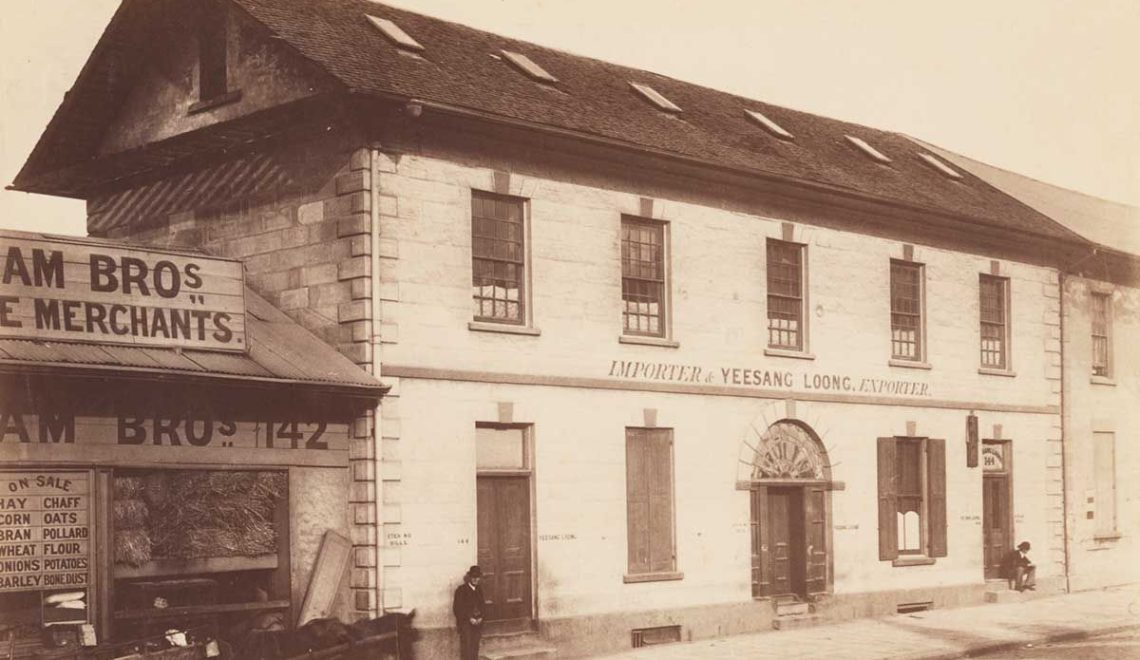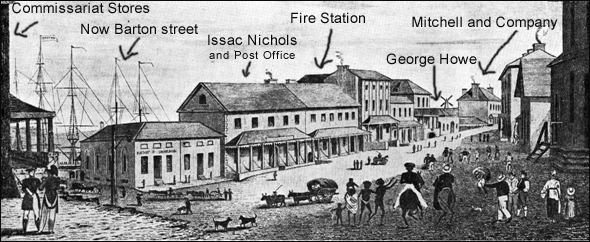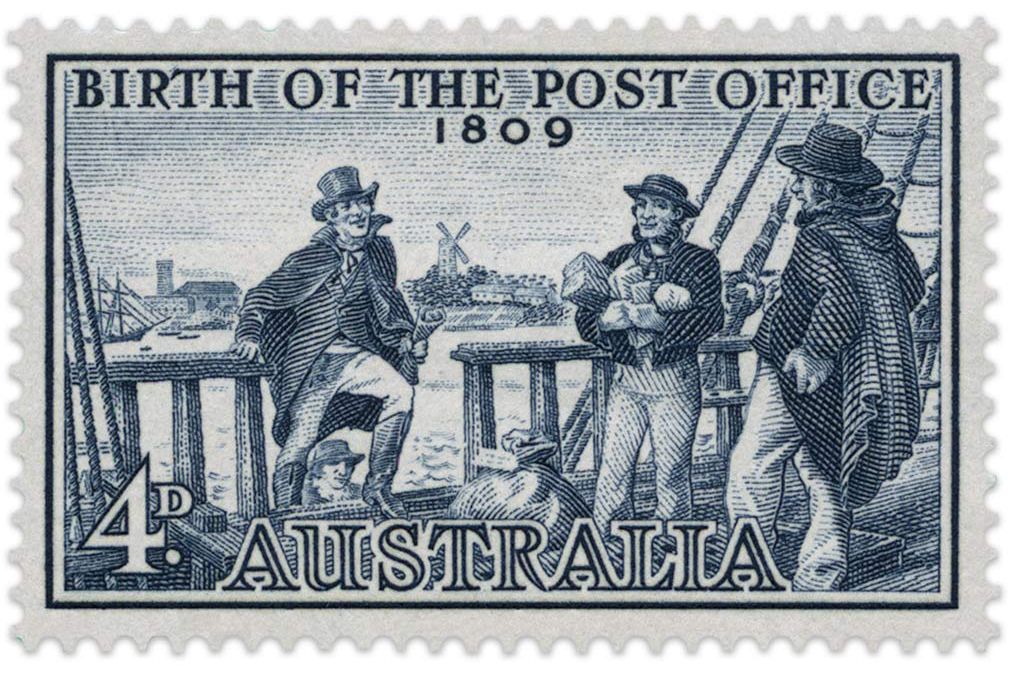
The Genesis of Australia’s Postal System: From a Convict’s Home to a National Network.
When the First Fleet anchored in Sydney Cove in January 1788 the new colony was cut off from Britain by oceans and months of sailing. Letters sent home were entrusted to captains of the occasional returning ship, while incoming mail was collected chaotically by anyone who could row out to a vessel pillarsofanation.com.au. Official news was proclaimed verbally, and by 1803 the Sydney Gazette began printing notices that told settlers where to leave or collect mailpillarsofanation.com.au. The absence of an organised postal service meant messages were delayed, stolen or sold back to their intended recipients. This changed dramatically in 1809 when a former convict, Isaac Nichols, turned his home into Australia’s first post office.
Isaac Nichols – From Convict to Postmaster
Isaac Nichols was born in Calne, Wiltshire, in 1770. Transported to New South Wales in 1791 for stealing, he impressed colonial authorities with his sobriety and hard work, earning early responsibility and land grantsnma.gov.au. By 1806 he owned an inn, a shipyard and substantial land holdings in George Street, Sydneynma.gov.au. Governor Hunter and later the military junta that deposed Governor Bligh saw in Nichols a trustworthy figure who could bring order to the colony’s mail chaos.
Establishing the First Post Office
By early 1809 complaints of fraud, theft and extortion on the docks had grown; settlers rushed to arriving ships and impersonated others to seize their correspondencenma.gov.au. On 25 April 1809 the New South Wales Corps appointed Nichols as Postmaster, giving him authority to board ships, collect letters and parcels and charge fixed feesnma.gov.au. The government ordered him to establish an office at his home on George Street, where people could collect their mail at predetermined pricesnma.gov.au. His house thus became the colony’s first post office — the first regular postal service in Australia.
Just two months later, on 26 June 1809, Nichols boarded the brig Experiment and collected the first officially organised bag of mail from Britain, an event regarded as the birth of Australia’s postal systemnma.gov.au. Nichols advertised names of mail recipients in the Sydney Gazette and charged one shilling per letter, with heavier parcels costing moreen.wikipedia.org. Important recipients received personal deliveryen.wikipedia.org. Because his remuneration was limited to postage fees, he continued to hold other positions to cover expensespillarsofanation.com.au.
Government Recognition and the Birth of Postal Infrastructure
Governor Lachlan Macquarie formally ratified Nichols’s appointment on 23 June 1810, making his home the colony’s first officially sanctioned post officenma.gov.au. Around 1812 Nichols created a hand‑stamp reading “Sydney NSW”, considered a precursor to Australia’s postage stampsnma.gov.au. He continued to publish lists of mail recipients, collect fees and occasionally hand‑deliver letters to the colony’s elitenma.gov.au. The success of Nichols’s operation spurred similar arrangements elsewhere: a Postmaster was appointed in Van Diemen’s Land (Tasmania) in 1812, in Western Australia in 1829, Victoria in 1836, South Australia in 1837 and Moreton Bay (Queensland) in 1842nma.gov.au.
The 1825 Postal Act and Expansion
For more than fifteen years the post office in Sydney remained a private business. The ad‑hoc system could not keep pace with the colony’s growth and there were still no organised inland servicespillarsofanation.com.au. To rectify this, the New South Wales Legislative Council passed the Postal Act of 1825. The Act regulated postal rates, established post offices at ports and inland centres and authorised the governor to appoint postmasters outside Sydneynma.gov.aupillarsofanation.com.au. When the law finally took effect in 1828 — after approval from Britain — a General Post Office was created in Sydney, letters were stamped and charged four pence each, and post offices opened in towns such as Parramatta, Windsor and Newcastlepillarsofanation.com.au. This shift from a privately run enterprise to a government‑regulated service marked the start of a unified postal network.
Significance and Legacy
Nichols’s post office represented more than a convenient mail collection point; it signalled a transition from informal arrangements to an organised communication network. By removing the chaos at the wharves and introducing fixed prices, Nichols ensured that messages from Britain and within the colony reached their intended recipients. The 1825 legislation built on his foundation, laying down statutory postage rates and salaries that underpinned later postal expansion. Postmen began direct deliveries in Sydney in 1828, and contracts with coach companies extended routes to towns across New South Walespillarsofanation.com.au. Over subsequent decades postal services spread to every colony, culminating in the unification of colonial postal administrations at Federation in 1901nma.gov.au. Today’s Australia Post — corporatised in 1989 — traces its origins to the day Nichols turned his George Street home into Australia’s first post officeauspost.com.au.
Timeline of Key Events
| Year/Date | Event | Evidence |
|---|---|---|
| 1788–1790 | Early settlers rely on ships of the First and Second Fleets; mail is carried back to England on outbound vessels, and letters within the colony are delivered by friends or boatmenpillarsofanation.com.au. | Pillars of a Nation historypillarsofanation.com.au |
| 1803 | The Sydney Gazette begins publication, allowing notices about mail collection and delivery pointspillarsofanation.com.au. | Pillars of a Nation historypillarsofanation.com.au |
| 25 Apr 1809 | Isaac Nichols is appointed Postmaster by the New South Wales Corps; he is authorised to board ships, collect mail and operate the post office from his home on George Streetnma.gov.au. | National Museum of Australianma.gov.au |
| 26 Jun 1809 | Nichols boards the brig Experiment and collects the first official bag of mail from Britain, marking the birth of Australia’s postal systemnma.gov.au. | National Museum of Australianma.gov.au |
| 23 Jun 1810 | Governor Macquarie ratifies Nichols’s appointment; his house becomes the first official post officenma.gov.au. | National Museum of Australianma.gov.au |
| c. 1812 | Nichols creates a “Sydney NSW” postmark — a precursor to postage stampsnma.gov.au. | National Museum of Australianma.gov.au |
| 1812–1842 | Postmasters appointed in Van Diemen’s Land (1812), Western Australia (1829), Victoria (1836), South Australia (1837) and Moreton Bay (1842)nma.gov.au. | National Museum of Australianma.gov.au |
| 1825 | New South Wales Legislative Council passes the Postal Act, regulating postage rates and establishing post offices; the Act authorises the governor to appoint postmasters outside Sydneynma.gov.aupillarsofanation.com.au. | National Museum of Australia & Pillars of a Nationnma.gov.aupillarsofanation.com.au |
| 1828 | General Post Office established in Sydney; mail is stamped and charged four pence per letter; post offices open across New South Walespillarsofanation.com.au. | Pillars of a Nationpillarsofanation.com.au |
| 1901 | Federation unites colonial postal systems under the Postmaster‑General’s Department; this later evolves into Australia Postnma.gov.au. | National Museum of Australianma.gov.au |
Conclusion
Australia’s organised postal service owes its existence to a remarkable ex‑convict who recognised the need for order amid the chaos of a burgeoning colony. Isaac Nichols’s appointment on 25 April 1809 and his establishment of a post office in his George Street home provided the colony with a secure and reliable communication channel. The 1825 Postal Act built on this foundation by transferring control to the government and extending services beyond Sydney, paving the way for a network that would knit the Australian colonies together and evolve into the nationwide postal corporation Australians rely on today.









